Practicing evening yoga soothes your mind and body, helping you fall asleep faster and sleep deeper. Simple poses and breathing techniques reduce stress and improve overall well-being. Make yoga your bedtime ritual for peaceful, restful nights.
Evening yoga routines can be a powerful tool for improving sleep quality. Research shows that practicing yoga before bed promotes relaxation and makes it easier to drift off. Many people struggle with sleep disturbances and stress, which can negatively impact their overall health. By integrating yoga for better sleep at night into their nightly rituals, individuals can create a calming environment that encourages better rest.
The benefits of a consistent evening yoga for better sleep practice extend beyond just sleep improvement. Evening yoga can reduce anxiety, lower heart rates, and enhance mindfulness, all contributing to a more peaceful mindset at bedtime.
With a few simple poses and breathing techniques, anyone can design a routine that fits into their lifestyle and leads to a well-deserved night of restorative sleep.
As more individuals seek effective ways to tackle sleep issues, yoga for better sleep at night offers a gentle and fulfilling approach. With dedication and the right practices in place, anyone can transform their bedtime routine into a soothing experience that supports restful nights and revitalized mornings.
Key Takeaways
- Evening yoga for better sleep helps promote relaxation and improves overall sleep quality.
- Incorporating specific poses can address sleep disturbances and anxiety.
- A regular yoga for better sleep routine can enhance both physical and mental health benefits.
My Sleep Game-Changer: Kyore Nutrition Melatonin Sleep Gummies
I’ve been through 6 months of tossing & turning … until I tried Kyore Nutrition Melatonin Sleep Gummies. Now I fall asleep in just 15–20 minutes. No more staring at the ceiling, no more restless nights.
What’s Inside & Why It Helps
- Restfull Sleep: Each gummy is packed with 7mg of Melatonin, a hormone that regulates your sleep-wake cycle, helping you fall asleep faster and stay asleep longer.
- Enhanced Sleep Quality: L-Theanine, a natural amino acid, promotes relaxation without causing drowsiness, ensuring a peaceful night’s rest without any grogginess upon waking.
- 3. Wake Up Fresh: With all natural ingredients, Kyore Nutritions Melatonin Gummies enhances your sleep quality and helps to control your sleep wake cycle.


4. Stress Relief: an adaptogenic herb, works wonders in reducing stress and anxiety, allowing your body and mind to relax before bedtime.
5. Best Price: 30 gummies at just Rs. 399/-

6. 4.5 Star Ratings by more than 550 people
🚀 Try It Yourself
If you’re in the same boat — tired, stressed, unable to sleep — this might be the helping hand you need.
Disclaimer:
This review is purely based on my personal experience with the product. I am not making any medical claims, and results may vary for different individuals. Please consult a qualified healthcare professional before starting any new supplement.
The Science of Sleep and Yoga’s Impact
Sleep quality heavily affects mental health and overall well-being. Research shows that incorporating yoga for better sleep into evening routines can enhance sleep health and help manage sleep disorders. Understanding sleep cycles and yoga’s impact on the nervous system is essential for anyone seeking better rest.
Understanding Sleep Cycles and Stages
Sleep consists of different cycles and stages that are crucial for restorative rest. The main stages include:
- NREM Sleep: This has three phases. The first phase involves light sleep, where one can be easily awakened. The second phase is when heart rate slows down, and body temperature decreases. The third phase is deep sleep, which is vital for healing and repair.
- REM Sleep: This phase usually occurs 90 minutes after falling asleep. During REM, the brain is active, and dreams occur. It plays a key role in memory consolidation and mood regulation.
Disruptions in these cycles may lead to increased cortisol levels, stress, and anxiety. That’s where yoga for better sleep at night can play a transformative role.cles may lead to increased cortisol levels, stress, and anxiety. That’s where yoga for better sleep at night can play a transformative role.
Yoga’s Role in Regulating the Sleep-Wake Cycle
Through bedtime, you can regulate your natural circadian rhythm. Gentle postures and breathing calm the nervous system and lower stress hormones.
When integrated into an evening yoga for better sleep routine, yoga becomes a holistic remedy to restore balance and promote sleep. Yoga nidra, in particular, offers deep mental relaxation and is beneficial for managing sleep disorders like insomnia. This makes yoga for better sleep at night a powerful practice for calming the mind and achieving restorative rest.
Benefits of Evening Yoga Routines
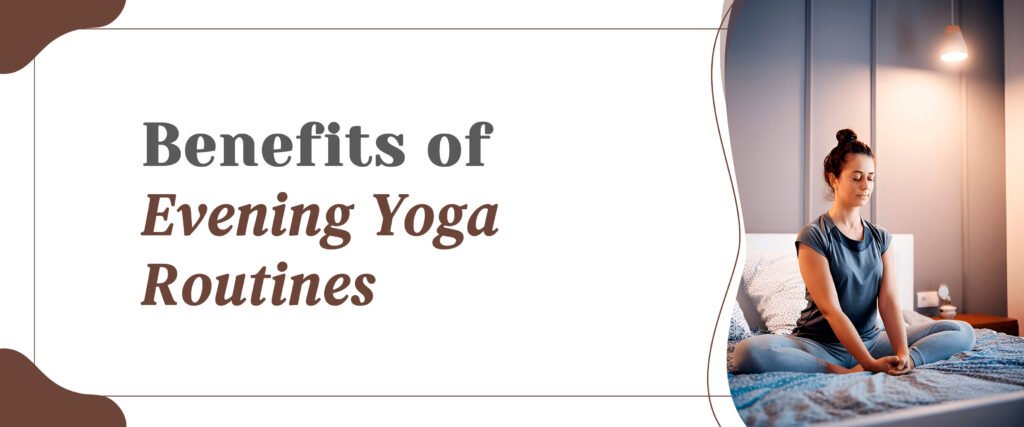
Evening yoga for better sleep is powerful in reducing stress. Poses like Child’s Pose and Seated Forward Fold soothe the nervous system, preparing the body for rest. Breathwork and yoga nidra sessions further activate the parasympathetic system, helping your body shift from alertness to rest.
Deep breathing techniques practiced in also play a critical role. Focusing on breath creates space for mindfulness, which helps individuals let go of the day’s worries. This combination can reduce cortisol levels, the hormone associated with stress.
Incorporating Restorative yoga for better sleep at night at the end of the day can enhance these effects. It encourages prolonged poses and deep relaxation, allowing the body to recharge. As a result, they can achieve a state of tranquility that prepares them for restorative sleep.
Enhancing Sleep Quality Through Relaxation Techniques
Evening yoga routine techniques like Legs-Up-The-Wall or Corpse Pose help you let go of physical and mental tension. These poses can calm your mind and induce deeper sleep naturally. By incorporating bedtime yoga into your schedule, your body receives clear signals that it’s time to wind down, preparing for peaceful slumber.
Restorative yoga for better sleep poses, such as Legs-Up-The-Wall, promote circulation and can lead to deeper sleep. They allow the body to rest while still engaging in intentional movement. Engaging in these calming activities also signals to the mind that it is time to wind down.
In addition, focusing on deep, controlled breathing during yoga for better sleep helps slow the heart rate. This creates an inviting atmosphere for sleep. Incorporating these yoga practices into the evening routine fosters a more peaceful mindset, ultimately improving sleep quality and promoting wellness.
Best Yoga Poses for Improved Sleep
Evening yoga for better sleep can greatly enhance sleep quality. Specific poses help unwind the body, promote relaxation, and calm the mind, making it easier to transition into a restful night.
Gentle Stretching to Unwind Before Bed
Gentle stretches are perfect for easing tension accumulated during the day. Yoga for better sleep poses, such as the Standing Forward Bend, help release tightness in the back and legs.
Seated Forward Bend is another effective stretch. By extending her arms toward her feet, she engages in a deep stretch that calms the nervous system.
Child’s Pose closes out the day nicely. Often included in bedtime yoga for better sleep, it encourages deep breathing and creates a sense of safety and stability.
Restorative Poses for Deep Relaxation
- Corpse Pose: Deeply calming and often used at the end of your evening yoga for better sleep routine.
- Legs-Up-the-Wall: Reduces swelling in the legs and calms the mind.
- Bound Angle Pose: Encourages openness and deep relaxation.
These yoga for better sleep poses are ideal additions to any nightly wind-down ritual.
Breathing Exercises for Calming the Mind
Breathing techniques enhance the effects of physical postures. Inhaling deeply and exhaling slowly promotes mindfulness. Yoga nidra, practiced in combination with deep breathwork, sets the stage for yoga for better sleep at night.
Happy Baby Pose adds a playful element to breathwork. By pulling her knees toward her armpits, she engages in deep breaths that release tension in the lower back.
Combining these breathing techniques with physical poses can create a calming ritual before bed. This practice fosters a peaceful transition, making it easier to drift into sleep. For step-by-step breathwork methods like Lion’s Breath or Sitali that enhance mental calm and transition, check out our post on Yoga and Breathwork for Mind‑Body Balance
Addressing Sleep Disturbances With Yoga
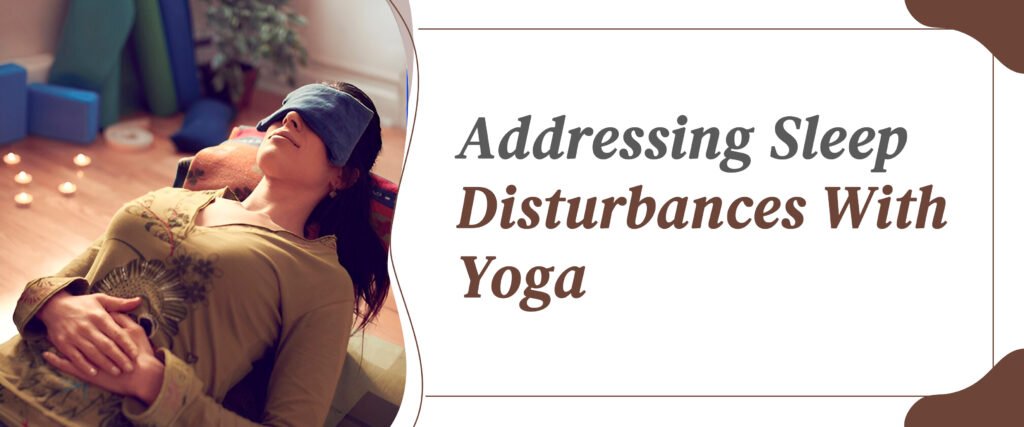
Yoga offers specific techniques that can effectively target sleep disturbances, such as insomnia and Restless Leg Syndrome (RLS). By incorporating yoga for better sleep poses and movements, individuals can relieve tension and promote more restful sleep.
Yoga Techniques for Insomnia
To combat insomnia, certain yoga for better sleep techniques focus on relaxation and mindfulness. Poses like Child’s Pose and Legs-Up-the-Wall help calm the nervous system.
Practicing Savasana (Corpse Pose) is also beneficial. This pose supports profound relaxation and helps quiet racing thoughts.
A common bedtime routine includes:
- Gentle Stretching
- Deep Breathing
- Meditation
These steps, when tied with yoga for better sleep at night, can lead to improved sleep patterns and less time spent awake.
Poses to Alleviate Restless Leg Syndrome
Restless Leg Syndrome can disrupt sleep and be quite uncomfortable. Specific yoga for sleep poses can help alleviate symptoms. Reclining Hand-to-Big-Toe Pose is excellent for stretching and soothing tight leg muscles.
Additionally, Cat-Cow Pose encourages flexibility in the back and legs, reducing overall tension. Incorporating a child-friendly routine can also help:
- Forward Bend: This pose relaxes the lower back and legs.
- Seated Forward Bend: This stretches the hamstrings and eases tightness.
- Gentle Twists: Twists help improve circulation and reduce discomfort.
These yoga poses allow for temporary relief from discomfort and help promote a more restful sleep by calming the body and mind.
Creating an Effective Nightly Yoga Routine
Establishing a nightly yoga for better sleep routine can significantly enhance sleep quality and relaxation.
Steps include:
- Setting a fixed time each night
- Incorporating gentle poses like Forward Fold
- Using Yogic Breathing for mindfulness
Mindfulness and meditation enhance the impact of yoga for better sleep at night, ensuring a peaceful transition to rest.
Steps to Develop a Consistent Yoga Practice
To build a nightly routine, it is essential to set a specific time each evening for yoga. Establishing an evening yoga routine signals the body that it is time to unwind. Begin with simple, gentle poses such as Child’s Pose and Forward Fold.
Practitioners can also incorporate Yogic Breathing by taking deep breaths, allowing the mind and body to relax. Deep breathing promotes calmness and prepares the body for rest.
A set duration, even if it is just 15-30 minutes, will help establish a habit. Keeping the space cozy with dim lights or soft music can enhance the ambiance of relaxation.
Integrating Mindfulness and Meditation Into Your Routine
Mindfulness is key to maximizing the benefits of bedtime yoga. Practitioners should focus on being present in each pose. This can be achieved through Yoga Nidra, a guided meditation technique that promotes deep relaxation.
Incorporating visualization techniques can further enhance mindfulness. As you settle into poses, visualize calming scenes like a serene beach or a quiet forest.
Ending the routine with a few minutes of meditation allows the mind to center. Sitting in a comfortable position, eyes closed, and focusing on slow, deep breaths can lead to a peaceful transition to sleep.
Together, these elements create a balanced and effective nightly yoga routine that nurtures both the body and mind.
Physical and Mental Health Benefits Beyond Sleep
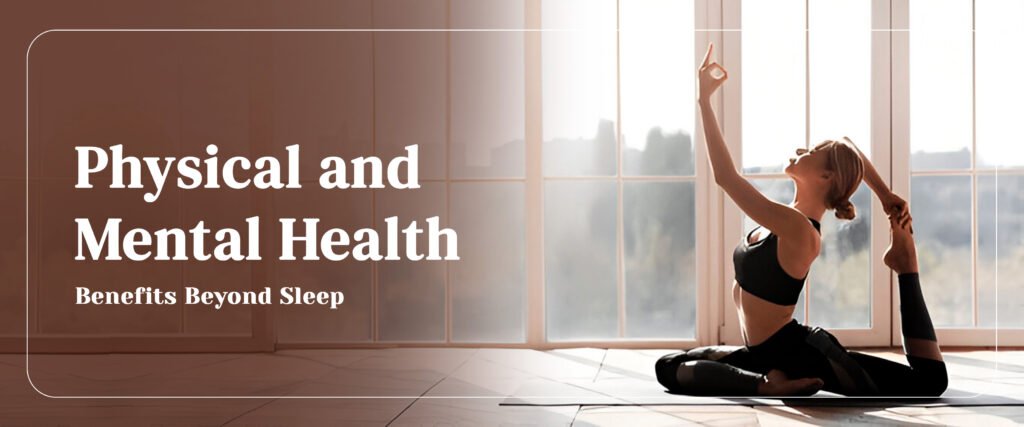
Evening yoga routines offer various benefits that extend beyond enhancing sleep quality. Practicing yoga for better sleep at night can also improve flexibility, physical fitness, and mental clarity. These factors contribute to an overall healthier lifestyle.
Improving Overall Flexibility and Physical Fitness
Hatha Yoga is particularly effective for enhancing flexibility. The gentle stretches and poses gradually loosen tight areas in the body. Improved flexibility not only makes daily activities easier but also helps to prevent injuries.
Engaging in yoga as a form of physical activity promotes overall fitness. Participants can build strength, endurance, and balance through consistent practice. This contributes to situations such as better posture and reduced muscle tension.
Additionally, yoga can support weight loss when combined with a healthy diet. As it boosts metabolism and enhances digestion, the body processes food more efficiently. This can lead to a healthier weight and improved bodily function.
Yoga’s Influence on Mental Well-being and Clarity
Yoga significantly influences mental health by fostering relaxation. Each session encourages mindfulness and reduces stress, helping to manage anxiety and depression. Practices like bedtime yoga and Yoga Nidra are especially effective in calming the mind and promoting restful sleep. Participants often experience a sense of calm that carries into their daily lives.
Mental clarity is another benefit that arises from yoga for better sleep practice. Breathing techniques and focused movements sharpen concentration and boost cognitive function. This leads to improved attention span, aiding individuals in both personal and professional tasks.
Furthermore, yoga encourages self-awareness. Practicing regularly allows individuals to connect with their thoughts and feelings. This awareness often results in better emotional regulation and decision-making skills.
Optimizing Your Sleep Environment
Creating the right sleep environment is essential for maximizing the benefits of yoga for better sleep on sleep quality. Pairing this with a consistent evening yoga routine can further enhance relaxation and prepare the body for rest.
By focusing on sleep hygiene and ensuring a comfortable sleeping area, individuals can improve their ability to achieve deep sleep and embrace mindfulness practices.
Role of Sleep Hygiene in Enhancing Yoga’s Benefits
Sleep hygiene refers to habits and practices that promote good sleep quality. This includes maintaining a consistent sleep schedule, avoiding caffeine and heavy meals before bedtime, and creating a calming atmosphere.
Establishing a relaxing bedtime routine, such as practicing gentle bedtime yoga for better sleep or deep breathing exercises, can signal to the body that it’s time to wind down. Reducing screen time at least an hour before sleep also helps since blue light can interfere with melatonin production.
Creating an optimal sleep environment involves keeping the room dark, quiet, and cool. Using blackout curtains, eye masks, or white noise machines can minimize disruptions. By following these practices, one increases the likelihood of deep, restorative sleep, which complements the benefits of yoga.
The Significance of a Comfortable Sleeping Area
A comfortable sleeping area plays a crucial role in promoting better sleep. The right mattress and pillows can significantly affect sleep quality. They should be supportive and suited to individual preferences, whether they prefer firm or soft surfaces.
Bedding materials also matter. Natural fibers, such as cotton or bamboo, promote breathability and comfort. Keeping the bedroom free of clutter can create a serene space that encourages relaxation.
Incorporating calming elements, like soothing colors or aromatherapy, can enhance the environment. Lavender, for instance, is known for its relaxing properties. Together, these elements help create a sanctuary that supports a restful night’s sleep, making it easier to practice mindfulness and embrace yoga for better sleep at night.
My Sleep Game-Changer: Kyore Nutrition Melatonin Sleep Gummies
I’ve been through 6 months of tossing & turning … until I tried Kyore Nutrition Melatonin Sleep Gummies. Now I fall asleep in just 15–20 minutes. No more staring at the ceiling, no more restless nights.
What’s Inside & Why It Helps
- Restfull Sleep: Each gummy is packed with 7mg of Melatonin, a hormone that regulates your sleep-wake cycle, helping you fall asleep faster and stay asleep longer.
- Enhanced Sleep Quality: L-Theanine, a natural amino acid, promotes relaxation without causing drowsiness, ensuring a peaceful night’s rest without any grogginess upon waking.
- 3. Wake Up Fresh: With all natural ingredients, Kyore Nutritions Melatonin Gummies enhances your sleep quality and helps to control your sleep wake cycle.


4. Stress Relief: an adaptogenic herb, works wonders in reducing stress and anxiety, allowing your body and mind to relax before bedtime.
5. Best Price: 30 gummies at just Rs. 399/-

6. 4.5 Star Ratings by more than 550 people
🚀 Try It Yourself
If you’re in the same boat — tired, stressed, unable to sleep — this might be the helping hand you need.
Disclaimer:
This review is purely based on my personal experience with the product. I am not making any medical claims, and results may vary for different individuals. Please consult a qualified healthcare professional before starting any new supplement.
Frequently Asked Questions
This section addresses common inquiries about how evening yoga can enhance sleep quality. It provides specific details about poses, practices, and benefits related to nighttime yoga routines.
-
What are the best yoga poses for promoting restful sleep?
Some of the most calming yoga for sleep poses include Child’s Pose, Legs-Up-The-Wall Pose, and Corpse Pose. These bedtime yoga poses help relax the body and prepare the mind for better sleep at night.
-
Can doing yoga in the evening help with yoga for better sleep insomnia and achieve deep relaxation?
Yes, following an evening yoga routine can help reduce insomnia by calming the nervous system. Practicing yoga for better sleep at night promotes deep relaxation and eases mental restlessness.
-
How can incorporating yoga into my bedtime routine potentially alleviate anxiety?
Practicing bedtime yoga with gentle stretches and mindful breathing can lower anxiety levels. This helps reduce racing thoughts, making it easier to fall asleep and supporting better sleep at night.
-
What are some effective 10-minute yoga practices suitable for bedtime?
A short sequence of yoga for sleep poses like forward bends, gentle twists, and restorative postures can help unwind quickly. Even a 10-minute evening yoga routine can calm the body and mind effectively.
-
In what ways can yoga before sleep contribute to weight loss?
While bedtime yoga may not directly burn many calories, it supports weight management by lowering cortisol and improving sleep. Better rest helps regulate hunger hormones and reduces stress-eating habits.
-
Are there benefits to performing yoga poses directly in bed?
Yes, gentle yoga for sleep poses like spinal twists or Legs-Up-The-Wall can be done right in bed. This allows for seamless integration of bedtime yoga into your nighttime ritual without much effort.
-
How does yoga nidra differ from regular bedtime yoga?
Yoga nidra is a guided meditation technique that induces deep relaxation. Unlike active poses, yoga nidra helps calm the mind and body through awareness, making it ideal for better sleep at night.
-
Can an evening yoga routine help balance sleep-wake cycles?
Yes, a consistent evening yoga routine signals the body it’s time to wind down. This helps regulate circadian rhythms and supports more consistent sleep patterns at night.
-
Is yoga nidra helpful for people who wake up during the night?
Absolutely. Practicing yoga nidra before bed or even during nighttime awakenings can guide the body back into deep rest. It’s one of the most effective tools for yoga for better sleep at night.
-
What is the best time to do bedtime yoga for better sleep for maximum benefit
The best time is 30–60 minutes before bed. Practicing bedtime yoga or yoga for sleep poses in a dim, quiet space enhances relaxation and signals your body to prepare for better sleep at night.

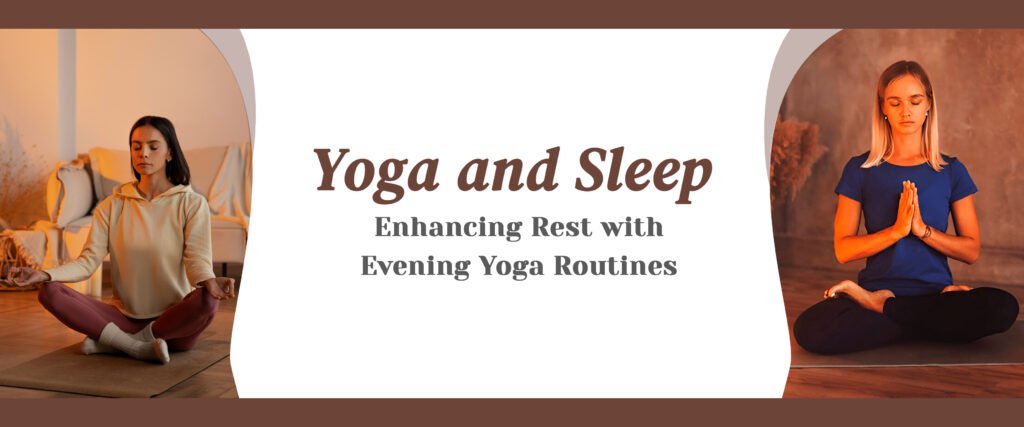
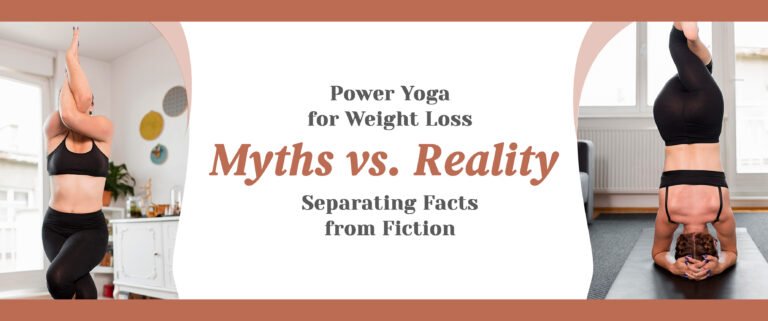
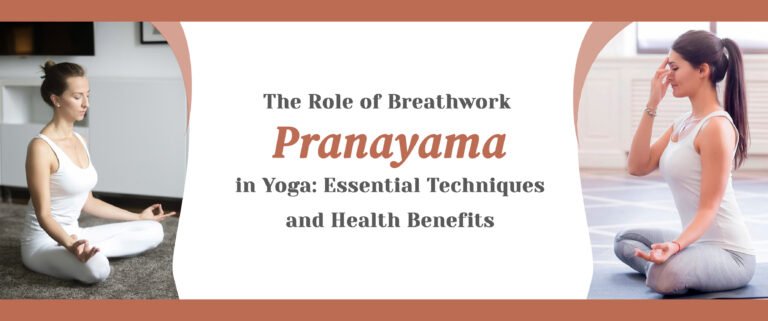

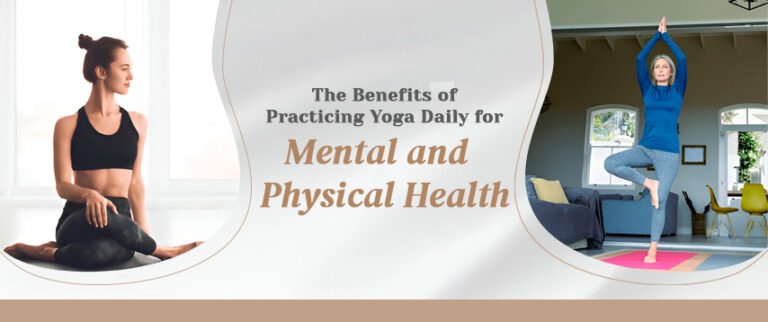

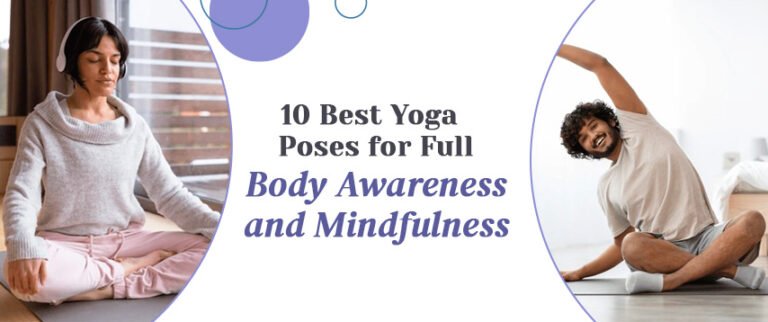
3 Comments
Pingback: श्वास अभ्यास के लाभ – योग में प्राणायाम का चमत्कारी प्रभाव"
Pingback: योग और प्राणायाम – तनाव मुक्ति के लिए योगासन से तन, मन और ऊर्जा में संतुलन।
Pingback: तनाव प्रबंधन: दैनिक जीवन के लिए 10 तकनीकें